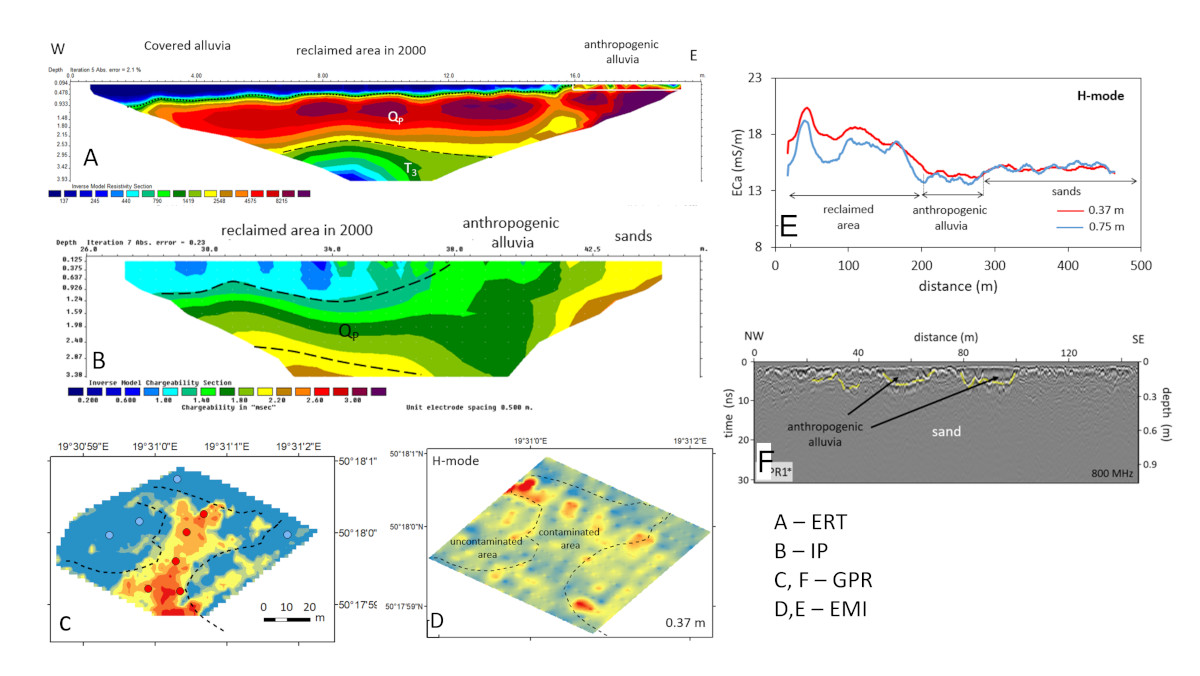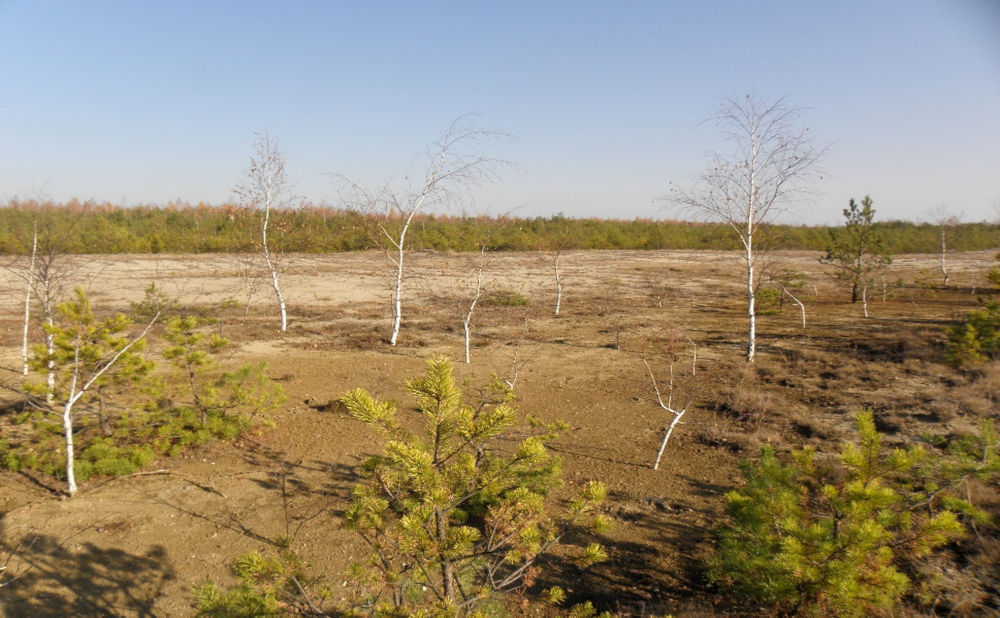Reclamation of abounded mine land is usually complicated, labor, and cost-intensive and thus, in many cases, does not restore the quality of the environment efficiently. The studies that support conscious and effective reclamation considering the quantitative and qualitative properties of Zn-Pb waste are crucial to determining the importance of selected factors, such as the thickness of waste and fertilized soil. As part of the project, we used geophysical measurements (electrical, electromagnetic and GPR) with the detailed chemical analyses to determine the properties of contaminated, reclaimed, and uncontaminated soils. Recognition of the diversity of these properties allowed us to determine the fertilized soil’s thickness, the depth of waste and its thickness; the extent of occurrence, and the degree of soil contamination. The detailed chemical analyses provided information on the mobility and availability of heavy metals to plants. A comprehensive analysis of the results of the field and laboratory tests also allowed for assessing the effects of reclamation and determining zones with very high contamination with trace elements still requiring reclamation.
The research was financed by the Director of the Institute of Earth Sciences, programme “Małe Projekty” and the project “Assessment of the effects of post-mining land reclamation treatments by geophysical methods)” National Science Centre, Poland: MINIATURA 5: 2021/05/X/ST10/00673,







